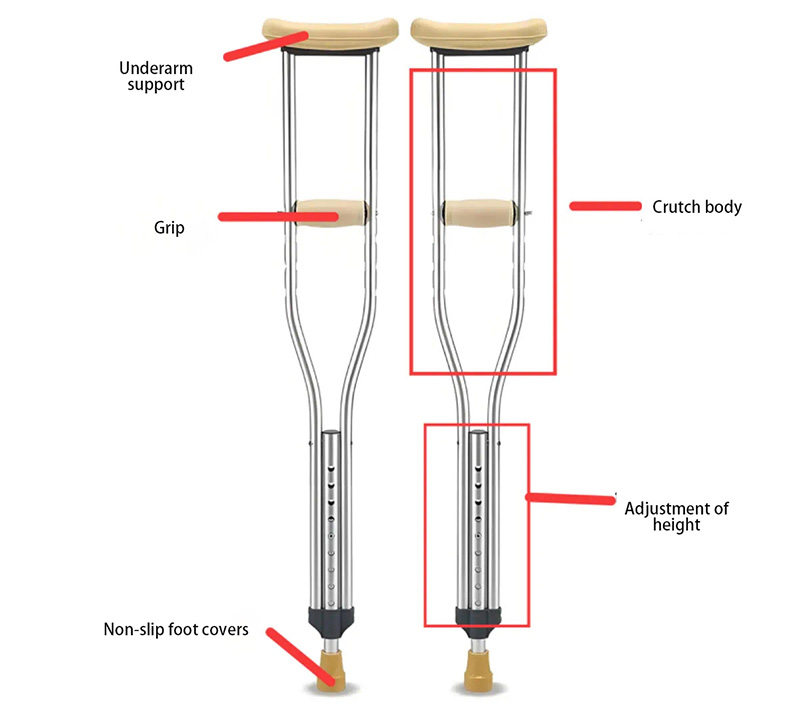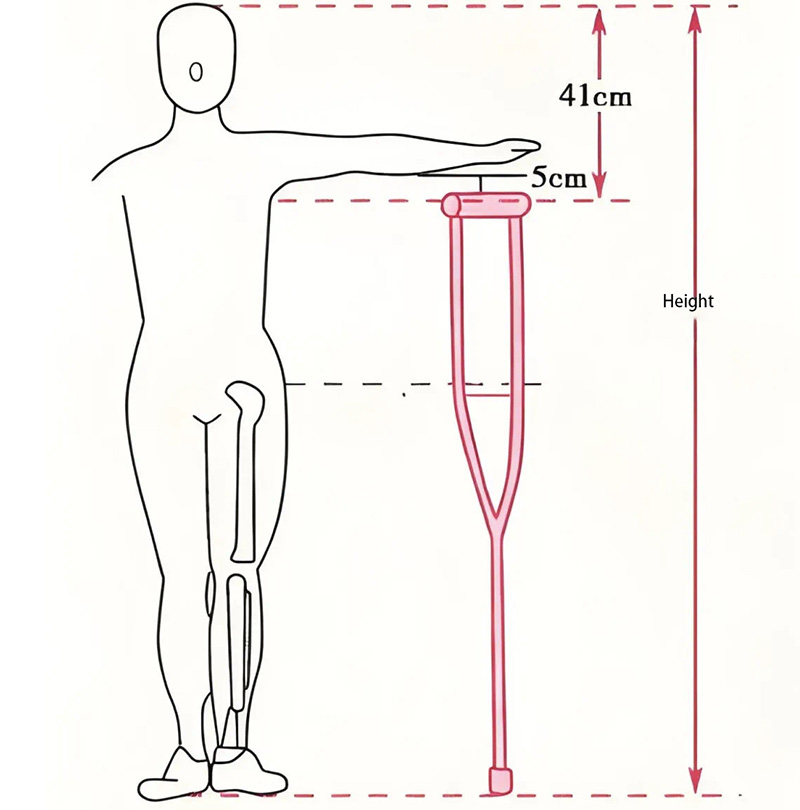Winter is high-incidence season for accidental slips and falls, especially when the roads are slippery after snow, which may lead to accidents such as lower limb fractures or joint injuries. During the recovery process from injury or surgery, walking with the aid of crutches becomes an important stage.
When many people first use crutches, they often have many doubts and confusions:”Why do I feel back pain after walking for a while with crutches?”"Why do my armpits hurt after using crutches?”"When can I get rid of crutches?”
What is an axillary crutch?
Axillary crutches are a common walking aid that can effectively help people limited lower limb mobility gradually recover their walking ability. It is mainly composed of a armpit support, handle, stick body, tube feet and non-slip foot covers. Proper use of crutches not only provides stability and support for those who need support, but also protests the user from additional injuries to the upper limbs.
How to choose the right axillary crutch?
1.Height adjustment
Adjust the height of the crutches according to your personal height, usually the user’s height minus 41cm.
2.Stability and supportive
Axillary crutches provide stong stability and support, and are suitable for users whose lower limbs cannot support their body weight. Depending on the specific needs of the user, they can be used on one side or both sides.
3.Durability and safety
Axillary crutches should have safety properties such as pressure resistance and impact resistance, and meet certain strength requirements. At the same time, the accessories of the axillary crutches should be firmly and reliably assembled, without abnormal noise during use, and all adjustment parts should be smooth.
Who are axillary crutches suitable for ?
1.Patients with lower limb injuries or postoperative recovery: In cases such as leg fractures, joint replacement surgery, ligament injury repair, etc., axilllary crutches can help share the weight, reduce the burden on the injured lower limbs, and promote recovery.
2.People with certain neurological disorders: When stroke, spinal cord injury, sequelae of polio, etc. cause weakened lower limb strength or poor coordination, axillary crutches can assit walking and improve stability.
3.Elderly or infirm people: If people have difficulty walking or are easily fatigued due to declining physical functions, using axillary crutches can increase their confidence or safety in walking.
Precautions for using axillary crutches
1.Avoid prolonged pressure on the armpits: During use, do not too much body weight on the armpits support. You should mainly rely on your arms and palms to grasp the handles to support your body to prevent damage to the nerves and blood vessels in the armpits, which may cause numbness, pain or even injury.
2.Check the crutch regularly: Check whether the parts are loose, worn or damaged. If any problems are found, they should be repaired or replace in time to ensure safe use.
3.Ground environment safety: The walking surface should be dry, flat and free of obstacles. Avoid walking on slippery, rugged or debris-covered surfaces to prevent slipping or tripping.
4.Apply foce correctly: When using crutches, the arms, shoulders and waist should work together to avoid over-reliance on a certain muscle to prevent muscle fatigue or injury. At the same time, the method and time of use should be adjusted according to one’s own physical condition and rehabilitation progress. If there is any discomfort or question, consult a doctor or professional rehabilitation staff in time.
Abandonment time
When to stop using axillary crutches depends on the degree of facture healing and personal rehabilitation progress. Generally, when the fracture ends have achieved bone healing and the muscle strength of the affected limb is close to normal, you can consider gradually reducing the frequency of use until it is completely abandoned. However, the specific time should be determined by the doctor and should not be decided by yourself.
On the road recovery, every small improvement is a big towards full recovery. We hope this article can help you. If you encounter any problems or concerns during the use of crutches or other rehabilitation processes, please seek professional help in time.
Post time: May-12-2025


